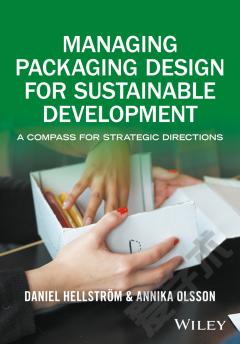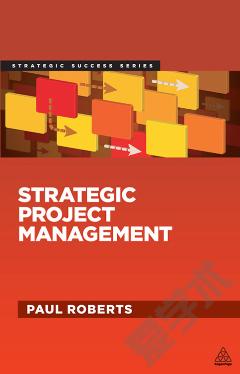Managing Packaging Design for Sustainable Development —— A Compass for Strategic Directions
----- 管理可持续发展的食品包装设计:战略方向指南针
This book is about packaging design for sustainable development, the kind of design that can make our lives friendlier, our planet greener and our businesses richer. It is necessary and obvious that we need to move towards a more sustainable society, as we see more pollution in our oceans, more waste in our streets, more landfills and the tremendous waste of essential resources such as food on our planet. Despite the negative effects that packaging might have on our world, we need to see the other side of the coin and ask: What can packaging do to contribute to sustainable development? Interestingly enough, there is research evidence indicating that packaging design initiatives have a major impact on sustainable development. Packaging design is a powerful vehicle for change in making the transition to a more sustainable society. What is missing is a compass that can guide practitioners in the right direction. This is particularly so in the field of packaging, where the routes you take may contradict rather than contribute to sustainable development. Managing Packaging Design for Sustainable Development presents a compass for you to find the path to get there. With the compass we encourage you to go offâroad, to develop and innovate, and to remake the packaging design solution that previously was best practice. In a world of continuous change, t echnology, people and organizations keep changing the routes we take to attain sustainable development. In this world, a compass is more important than ever before. The intention of this book goes beyond presenting a compass. The overall ambition is to bring order out of chaos in a multidisciplinary field where misconceptions and contradictory views are more dominant than the coherence and recognition of its importance. Managing Packaging Design for Sustainable Development â A Compass for Strategic Directions is strongly grounded in the concept that the book as a whole has a far more important story to tell than p resenting every little detail. Even though reading the book makes you zoom in on packaging design, its aim is to empower you to zoom out and gain a holistic view that considers the many packaging design contributions to sustainable development. Consequently, it is not intended to be a reference book per se, but rather an inspirational guide to this complex and important topic. In line with that ambition, the book aims to reach the minds of all professionals and companies that have, or do not have, packaging as a core competence or Preface Prefacexiv business. Packaging design is a cooperative team effort of people from multiple disciplines. Thus, there are many professionals from various disciplines, company functions and departments for that matter, who are involved in packaging design. This can include professionals from R&D, production, marketing, sales, finance, purchasing, logistics and regulatory. For a majority of these professionals, packaging is not their core competence. This book provides them with guidance so that they can navigate the packaging landscape. Yet, for highly experienced professionals in the realm of packaging design, the book provides great inspiration and valuable new ways of thinking. Theory and practical applications are balanced by dividing this book into three integrated parts. In Part I, the basic tenets of packaging, sustainability and design are presented to make the book more managerial, integrative and âcutting edgeâ. Views on sustainable development and packaging design are also subjects that you will become acquainted with in Part I. It âsets the sceneâ for what is to come: the packaging design compass for sustainable development. Part II is the focal point of the book. It describes the compass in detail, its directions and how to navigate with it. Part III exemplifies the compass directions in a wide range of illustrative cases that help readers to understand and gain insights into explorative, comparative and realâlife cases. It aims to inspire and challenge the mindsets of those who apply the compass in packaging design related projects. The case material is integrative in nature and examines directions of the compass that are important for sustainable development. The cases are structured to inspire readers in the challenging task of packaging design thinking. Packaging design for sustainable development is a field in its infancy, veiled behind preconceived myths and misconceptions. There is a tremendous amount of knowledge that needs to be generated and disseminated, and there is considerable interest from industries and academia to take in and apply this knowledge. Managing Packaging Design for Sustainable Development â A Compass for Strategic Directions is the only publication that takes a broad supply chain orientation and views the subject from a sustainable development perspective. While emphasizing the supply chain aspects of packaging, it integrates all three pillars of sustainable development as well as incorporating how to make strategic d ecisions in relation to packaging design. In addition to the compass, there are several important topics that are unique to this book or are approached in a new way. Examples are the complexity and challenges of packaging design, and the packaging logistics perspective as such. The multidisciplinary themes are interwoven throughout the chapters. This is a mustâhave book for designers, engineers, logisticians, marketers, SCM professionals and other managers who seek guidance on sustainable solutions through packaging design. The nature of the book is pragmatic and applied in its approach to managing packaging design for sustainable development. It is also a valuable source of knowledge and practical experience for students, public officials, researchers, policymakers and many others who have a strong interest in packaging design and sustainable development. It fills the gap in the scarcity of books about the crucial role packaging design plays in sustainable development. It clearly takes a giant leap from thinking of âsustainable packagingâ to Preface xv thinking of âpackaging design for sustainable developmentâ by comprehending the whole rather than the separate parts. As with packaging design processes, the outcome of this book has been a journey of iterations based on the authorsâ many years of experience. This has been intertwined with the practical cases and integrated with the existing but sparsely reported research in the field. The journey has taken several directions. It has consisted of realâlife presence and offâroad imaginary thoughts. At the end of this journey, we wished weâd had a compass. Yet without a compass, we still feel we have moved in the right direction by contributing to and inspiring packaging professionals and communities to strive for a more sustainable world (Less)
{{comment.content}}








 京公网安备 11010802027623号
京公网安备 11010802027623号